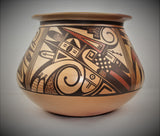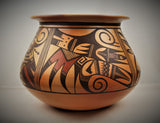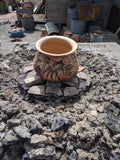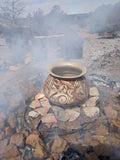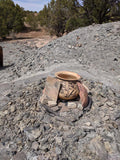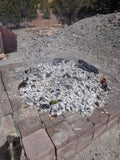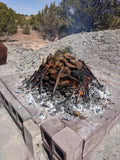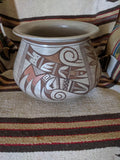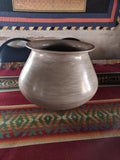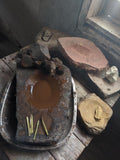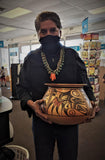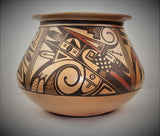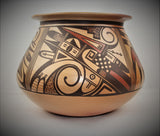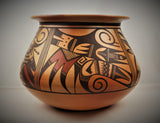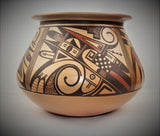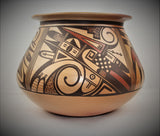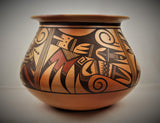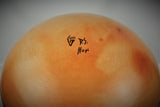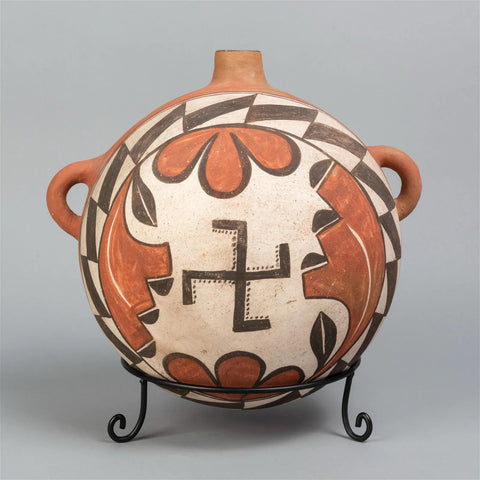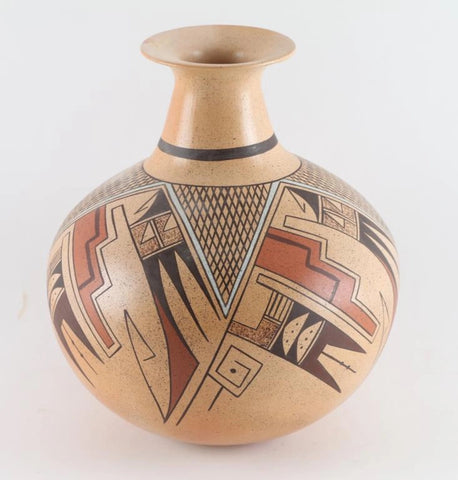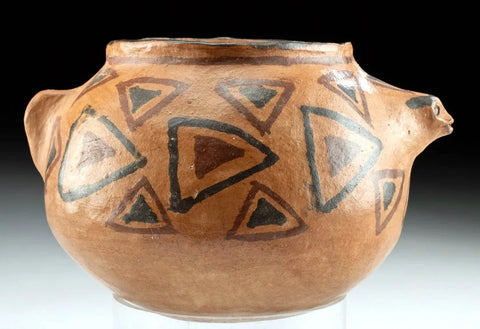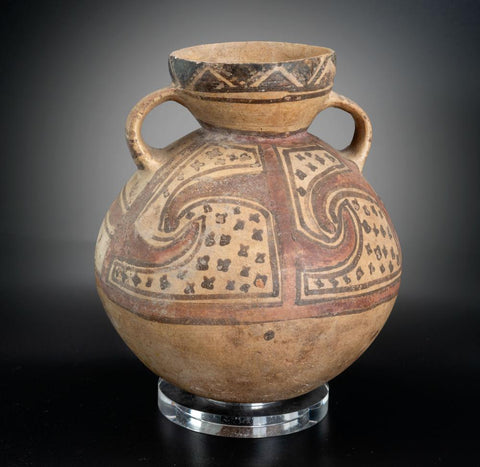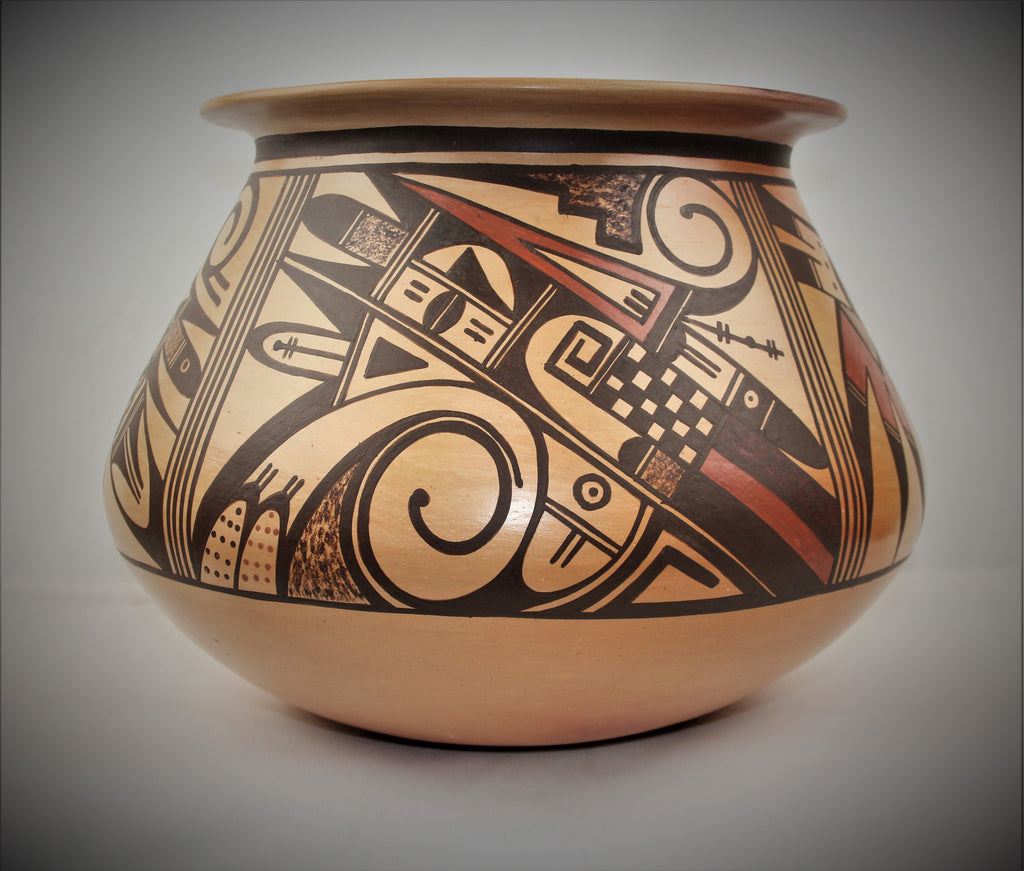
Native American, Extraordinary Large Traditional Hopi Polychrome Pottery Jar, by Dee Setalla, Bear Clan, # 1690
$ 7,600.00
Native American, Extraordinary Large Traditional Hopi Polychrome Pottery Jar, by Dee Setalla, Bear Clan, # 1690
Description: # 1690 Native American, Extraordinary Large Traditional Hopi Polychrome Pottery Jar, by Dee Setalla, Bear Clan. Dee spent approximately 6 weeks creating this work of art from the start of acquiring the clay, painting, and firing the final piece. A hand written description of the symbology used in the piece and their meaning is also included with this item, making it a true "one of a kind piece". I believe that Dee is one of the finest Hopi Potters alive today. His work is Museum and Heirloom quality, and will continue to increase in value over time.
Condition: Beautiful.
Dimensions: 10" x 13"
Provenance: Dee Setalla
Building the Jar!!! In Dee’s own words.
"This large Hopi Traditional Jar was made with the labor of love"
"This Jar was hand built with Earth Clay using the coiling method, and using shards for shaping tools. Sanded with Sand Stones, burnished with smoothed river bed rocks".
"Paints are also natural pigments from the earth. Black is from the Bee Weed Plant, Orange is Santa Domingo Pueblo Clay, Maroon is from the Yellow Iron Rock. The designs were painted on with a fine yucca stem which comes from the Yucca Plant".
"The Jar was fired outdoors with dried sheep dung at a temperature of 1900 degrees. The different dark blush or fire clouds are from the firing where the hottest pockets were".
"The designs and meaning are my interpretation of different things. Each potter has there own meaning for their designs".
"This is what traditional Hopi Pottery is!!
"Dee Setalla, Hopi Pueblo, is a son of Pauline Setalla brother of Gwen Setalla, Agnes Nahsonhoya, Stetson Setalla, Justina Setalla and Karen Namoki. Nephew of Fawn Navasie. He is therefore in the Frog Woman and Feather Woman families. He credits his mother for teaching him not only how to form and decorate a vessel but for the proper respect for Mother Nature when gathering clay. He strongly believes that when working with clay, the potter is bringing to life a new being and it must be respected and nurtured. Many of the older potters hold such beliefs, but it is interesting to see that a younger generation can have such feelings as well". Reference: Hopi-Tewa Pottery: 500 Artist Biographies by Gregory Schaaf. (Source: adobe Gallery)

